Anatomy of an Era: Mark Gilman, Part 3
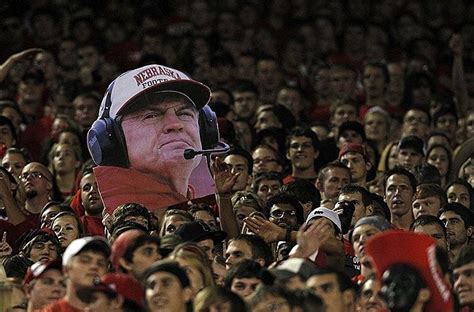
Excerpted from Chapter 95, No Place Like Nebraska: Anatomy of an Era, Vol. 2 by Paul Koch
Anatomy of an Era: Mark Gilman, Part 3
Q: Do you have a favorite or most memorable off-field occurrence?
MG: I’m gonna wrap them up into one. I’ll take a thousand off-field experiences and wrap them into one off-field experience: that would be my weight lifting with Brenden Stai.
I still consider him one of my best friends on this earth and I consider him one of the reasons why I stayed at Nebraska because, again, at first it was tough. When I met him it changed. He had the same love for the weight room as I did, and working hard. And him and I lifted a little bit at the stadium together, but him and I would always go to the student rec center and have our own training sessions.
We would normally just go to the rec center where all the students lifted, believe it or not. And I know it sounds funny, but him and I? The memories of just getting ready for the season were something, especially during the summertime. And we would work hard over at the stadium…
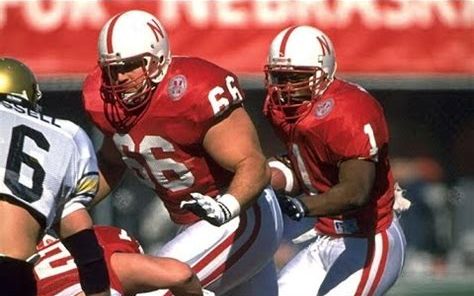
Q: Then we’d end up kicking you out because we didn’t want you overtraining…
MG: Yes, exactly. And you were there and might remember me, but we took care of business at the stadium, too.
Q: You were always very coachable and approachable, and you worked very hard…
MG: Oh, hell yeah. And I won Lifter of the Year.
And I’ve got to tell you -Stai and I- it would be a production as we prepared to go over to the student rec center. We’d eat, then we’d talk about it, then we’d go over there and hit it. Isn’t it funny that that would be one of my memorable off-field experiences?
Q: Just about anything involving Brenden would make it memorable…
MG: Exactly. Hey, hold on a second while I talk to my wife quick… (pause) Okay, I’m back.
Q: So where is the wife from?
MG: Hastings, Nebraska.
Q: ‘TomOsborne-ville?’
MG: Yeah, that was kinda one of the longstanding conversations whenever Osborne was around. My wife and her family would always say, “Hey, we’re from Hastings!” And then he would remember that, so whenever he saw them he would always remember that and they’d talk about Hastings. It was kind of a neat thing.
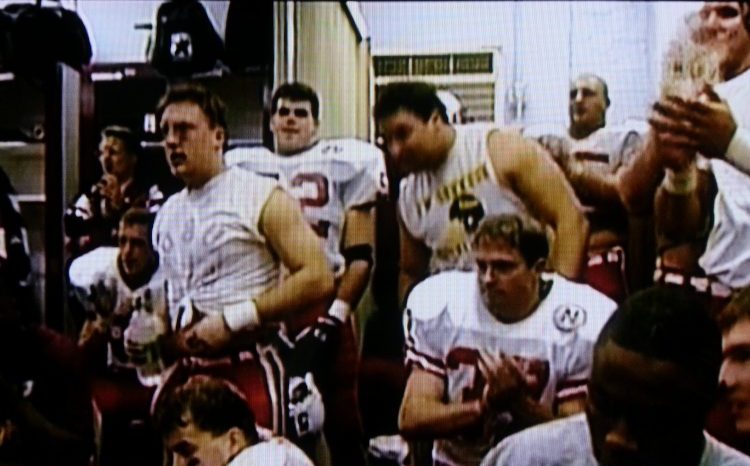
Q: Can you tell me a memorable practice story?
MG: You know, there are a ton. So many practice stories. But I think the practice stories that stand out- that were an ingredient to the success of my junior and senior year, and of course, my sophomore year, also, and us going against Florida State– but it was when it was ones versus ones. That really picked up those last two years.
And the philosophy before was, “Hey, we don’t want to get anybody hurt,” but we really started going one versus one, and would go ‘goal line’. And I can’t remember -I think it was the Wednesday practices- but we’d go ones versus ones on the goal line. That was the bomb! You talk about it: you could feel the intensity rise and the defense -you know, defensive players aren’t the smartest guys in the world- they would start hooting and hollering and jumping up and down and head-slapping each other, you know? And we would line up and run about three plays against each other. It wasn’t very many, but I will never forget that, because you talk about getting prepared for the game? That’s one of the most memorable things.
And the one that stands out the most was before the last Big 8 game versus Oklahoma. It just stands out to me, the intensity in that stadium where we were going ones versus ones. I will never forget it. Holy crap, it was a lot of fun. Later on in my career the coaches starting emphasizing the one-on-one, best versus best.
Q: Three plays was all you’d run?
MG: It wasn’t very many, because you’ve got to think about injuries. Because when I say one-on-one for three plays, it was live. Including chop blocks. It was live. It was game time. I was always taught to come off the ball and make my initial contact -and if I felt like I was losing contact to go down low, so I’m chop-blocking Grant Wistrom- and the last time I checked we probably wanted him to play in the next game. It wasn’t very many plays.
Q: Personally and team-wise you wanted to win the games and the national championship and all, but what was your motivation? What was it that pushed you to keep on pushing? To excel?
MG: You know, on a personal level? It’s funny that you ask that. I think a lot of guys in a major college football programs are going to be driven by the NFL, and I wasn’t. And I made the decision when I got done of, ‘I’m not going to the NFL.’ And then the Cincinnati Bengals came calling and I actually went there for the first mini-camp and I said, ‘I retire.’ I didn’t even make it through mini-camp. I said, ‘I’m done.’
And the reason I’m telling you this is that I wasn’t personally motivated by the NFL. I think a lot of guys were, “How do you get a shot at the NFL?” Well, you look great on film. You work really hard, and then you look great on film and that helps your team win. I wasn’t motivated by that. My thing? I think I was just motivated by just the idea of having the privilege to play at such a high level at such a great school for great coaches.
I know it sounds cliché, but it really is the truth. I understood the opportunity that I had and I also understood the window of time was not going to be very long. I started two years. I had a two-year window to give it everything I had and have no regrets.
Q: Twenty-five games…
MG: Exactly. I was really big on just ‘the situation’, because my dad was always telling me that “You have to make the most of this time. Because once it’s gone, it’s gone.” And I just truly believe the motivating factor for me was that I understood and realized the opportunity I had to start for this team.
I also understood the opportunity of playing for a potential national championship. It’s not like we were an 8-8 team, this was something special, and I really couldn’t believe I was actually in a situation where I had an opportunity to play for such significant things and I did not take one minute for granted. My motivation was just making the most of it.
Q: It sounds like you came in with that sense of urgency that Coach Brown always preached.
MG: You’re 100% right. And I think that’s why I really clicked with him. That’s why I bought into Coach Brown and believed in what he was trying to teach. I shared basically the same views on things, and I know one of the things my Dad always said was, “There’s gonna be a situation -and you may not realize it now- but for the rest of your life you’re going to look back and ask yourself, “Did you do everything you could?” And now I’m turning 38 years old in about a week, and every day I look back I can turn to the mirror and say, ‘I did everything I could.’
Q: That’s a great feeling…
MG: Well yeah, you don’t want to have any regrets. So my motivator, basically, was that I did not want regrets. I didn’t want to say, ‘Gosh, if I only would have worked a little harder the summer before my senior year, maybe I would have started…’ I knew I had an opportunity to start, and son of a gun, I was not going to let it go by. (laughs) So that was my motivation.
Q: What can you tell me about leadership? Peer leadership? Any special intangibles going on at that time?
MG: Well, you know, I think we had a great combination of players at that point in time. We just had good personalities; you’ve got to look at a guy like Christian Peter. Now Christian Peter back then, when he played football, you almost wanted to put him into a ‘muscle head’ category, a ‘dumb jock’ category or however you want to do it, but you talk about a dude who could get you going?
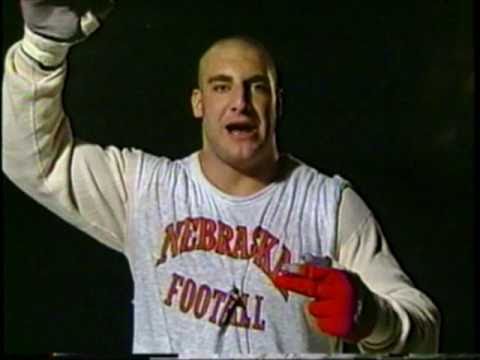
Q: In what way?
MG: Just in his comments and his being loud. It’s just football, man: alpha-male football is how I can best describe Christian Peter. He was the one who would punch the locker, he was the one when we were doing winter conditioning he would be over there yelling the whole time at everybody, challenging the guys in his group to keep up with him, yelling over at the offensive linemen. Something you might perceive as a negative was actually positive, like, “Come on, fat boys!”, things like that, to the O-linemen.
People from the outside might see that as bad, as negative, but it was really the exact opposite. It was basically his way of saying, “Let’s get it on together. You’re here. I’m here. Let’s all give it 100%.” Guys like Christian? It was awesome. (laughs)
Q: Like Charlie McBride, he was pushing all the buttons he could find, huh?
MG: Yeah, pushing all the buttons. It was just good motivation, you know?
And then, you know, the commitment of the Nebraska walk-on program… just think of what a wonderful philosophy that was and what great a concept that was. Allowing these kids whose families were in it with them, the importance of Nebraska football and how much it meant to families, entire towns? These kids represented entire towns and worked their way in there, ran through walls for the opportunity to be there.
Q: Much less play…
MG: Oh yeah, much less play. And just being there, man. The joke was… a couple guys had the joke where they’d say, “He’s just happy to have the Converse.” You know, at first they had the Converse contract, and Nebraska was known for the Converse shoes. And that was the joke with some of the guys; it was pretty obvious that they probably shouldn’t have been there with their skills and their talents, but they were the hardest workers in practice and they were just happy to have the Converse. They would wear the shoes to class and people would know they were a football player, you know?
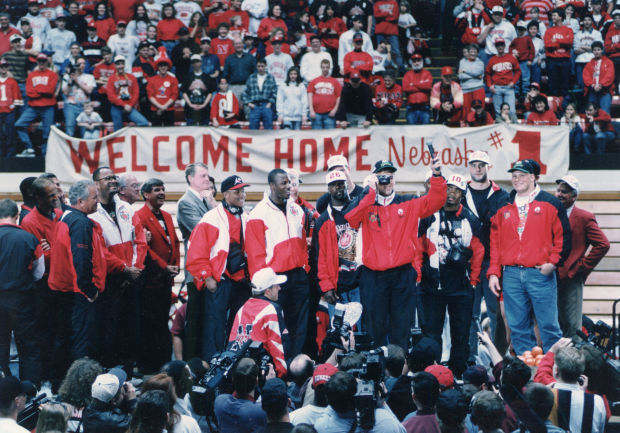
Q: That’s beautiful…
MG: And they were proud of it. And that’s another thing, when you see guys that it means so much to them to be there, that’s another motivator. Those guys would do anything. They were representing their whole towns.
Q: Doug Colman made a statement that he “realized it wasn’t about him, and he ‘became a Cornhusker,’” how they did something to his heart. Can you speak to that?
MG: It’s funny you say that, because when it came to me I was the exact opposite of that. But I remember him ‘talking NFL’ from day one. And now you say that he said that? That makes a lot of sense to me.
You know, I think my transition would have been 180 degrees from that, just the exact opposite of Doug: just wanting to seize the opportunity. But yeah, definitely in that process I put my heart and soul on the line for the coaches and for my teammates, as well. I agree with his statement 100% and I would share the same sentiments that he said. There was something about it, man.
Q: I’ve come to learn this, Mark: it seems that it was the walk-ons who primarily ‘sold’ you out-of-state guys on the fact that you weren’t merely playing at Nebraska, but that you were playing for Nebraska..
MG: Right. Definitely. It was bigger than anything else, just being out there and looking at these guys and how proud they were, how proud they were to be there. And like I said, there were some guys you could tell right away, ‘This guy’s too small and too slow. He doesn’t even have the intangibles so he’s never going to play.’ Yet there they were. Every… single… day.
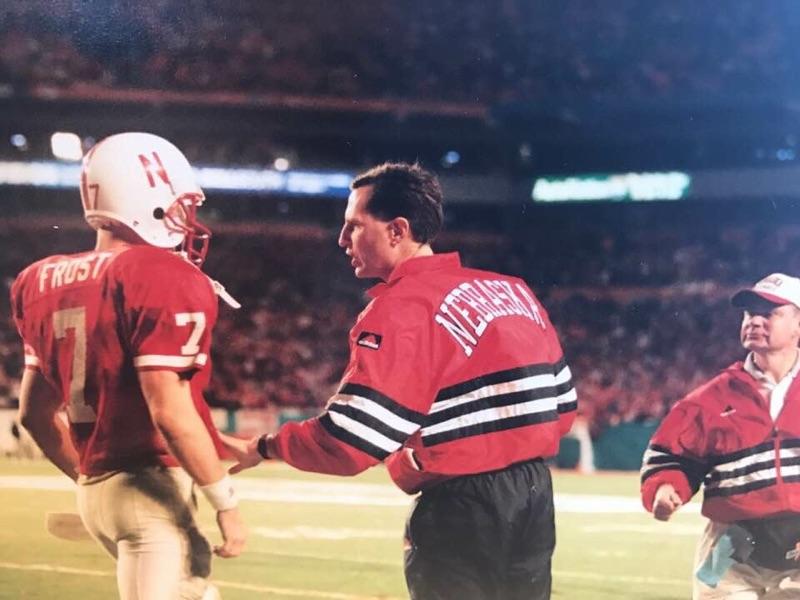
Q: This brings me to one of my favorite questions: is there any one person who played a huge part in the team’s success? Who functioned behind the scenes or perhaps never got their due for the influence they exerted?
MG: Oh, there’s just so many. It would be so hard for me, really hard for me to single one person out. I’d probably need some time to think about that. There’s just so many. I think one of the things that stood out to me was the staff members, of course, guys like Bryan Bailey, guys like yourself, who also bought into and became Huskers.
One thing that I’ll always appreciate is when you first get down there as a freshman, it’s tough. It’s tough in any big program: you’ve got to kind of prove yourself a little bit before you get a ton of respect. And one thing that affected me early on were guys like Doak Ostergard.
Doak treated me -when I was a freshman and 8th on the depth chart- he treated me like I was starting the next game. And that’s something that I really appreciated from him, because I had some hamstring issues when I first came down there, and I remember Doak really being concerned and helping me out and things like that. Keith Zimmer, another guy who really helped me out off the field as far as real life, school-type things, always being there for me and somebody to talk to.
I really liked Keith Zimmer. So it’s kind of hard for me to really pinpoint one person. You talk about Bryan Bailey -and the staff as a whole, too- he kind of shared the same passion for the place. You could go to a lot of places -and I’ve been in business now almost going on twelve years- and human nature is negative at first. I think human nature is to challenge the administration or challenge your boss or question the direction of where the administration is taking you, and I never got that from most all of the staff members because they’d all bought into it, as well.
Q: Everyone’s pulling in the same direction?
MG: Yeah, but I think it’s human nature to do the opposite. You could have a guy like Doak say, “That dang Osborne, he makes me come in here on a Sunday…” He never did things like that, man. He was full support.
And the thing is, negativity can spread like a cancer. And it only takes one person who’s negative to spread through the group. And I never got that from anybody on staff, they bought into it, too.
Q: Was there any negative pulling amongst the team members? Obviously it wasn’t a utopia. Do you ever recall thinking, “That guy’s a real downer. What’s he doing here? I wish he weren’t here to pull us down.” Any examples of that?
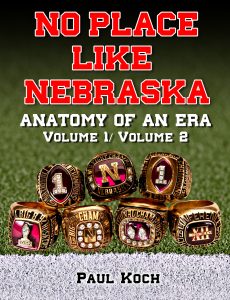
Available on Amazon.com
MG: (laughs) I’ve got to tell you, I didn’t run into that. I can honestly say –and I heard before I got there that they formed the Unity Council because of white/black and some issues between offense/defense- but that’s what I heard. Maybe you know more, but I can honestly say I didn’t see any of that. I did see some segregation in the lunchroom. You know, the African-Americans sat over there and stuff like that, but I didn’t feel any racial tension or anything like that. And negativity? I think what Doug Colman said about becoming a Husker, there just wasn’t a lot of people who I considered to be a part of the Dope Club.
Q: The Dope Club?
MG: The Dope Club. Not the drug, but just being a dope. The Dope Club is just that: it spreads like a cancer. You get some guys together and they all start making each other feel bad and talking bad about their situation. And I just never got a sense of that. Never got a sense of that.
And I don’t know if it was my timing and Nebraska was spot on, but it just seemed like everybody was marching toward the same goal, whether it was Tommie Frazier as the starting quarterback or Brook Berringer as the starting quarterback in Tommie’s absence, all the way down to Darren Schmadeke and his brother Damon. (laughs) I mean, Darren Schmadeke and Damon Schmadeke were on the same page as Tommie Frazier.
Q: I’ve talked to those two guys. They’re awesome! And speaking of, who was your roommate in college?
MG: I first stayed in the dorms and my roommate was Tom Steer. Tom Steer was from Crete, Nebraska and he ended up transferring to Hastings College. So he was my roommate by default my freshman year in the dorms, and then I had the great opportunity to live for three years with Brenden Stai and Tom Sieler. It was the deal. It was awesome. We had so much fun.
That right there was something, we planned our day and the preparation we had before we went to lift weights, that was awesome. (laughs) Those were three of the greatest years. And then my senior year I lived with my wife. Don’t tell anybody. (laughs) She kept me focused. (laughing) I was going home like I was married. It kept me focused.
Q: Anything we haven’t touched upon that set Nebraska football apart from everybody else? Anything that made it operate so efficiently, so effectively, made it so dominant?
MG: I told you about my coaching at Washington State. And I guess it’s one of those things: I look at the Washington State program when I compare it to the Nebraska program of that era. I look at the Washington State program because they played in the Rose Bowl against Michigan, almost Top 5. But the Nebraska program was, I really didn’t know how to put it into words, but it was big business versus mom ’n’ pop.
Take practice, for example. Let’s talk about Nebraska’s practice versus Washington State’s practice: Nebraska’s practice? At one point at practice you would have four full stations: the 1 offense versus 4 defense, 2 offense versus 3 defense, and vice versa with the defense versus the offense, and play after play after play like a machine, like a printing press. Regimented like the military, running these things over and over again until they become second nature and perfection.
Now, when you looked around the field no one was sitting for a period of time. No one. From the starting quarterback to the tenth string quarterback, constant repetition, constant movement, constant conditioning, constant mental training. Just go, go, go.
Whereas at Washington State there was a lot of standing around, they barely had enough for two stations much less four stations. And that was partly a walk-on numbers thing, but then you’ve got to remember what we just talked about, these kids from Nebraska who would do anything to be there and were giving 100% one hundred percent of the time.
Again, it just comes down to Ron Brown’s summary of having a sense of urgency every single moment that you were doing football, whether that was in the weight room, the film room or on the field. And that’s how I sum it up. And a team like Washington State who had so much success that year? They came up and played us pretty tough my senior year, but we still, if we wanted to, could have beaten them 70 to 10. We closed the offensive book down and we didn’t want to show too much, but we still beat them 35 to 21.
You know, the scoreboard wasn’t an indication of what we could have done. We, in fact, fumbled in the red zone twice in that game, and we kicked four field goals that were like ten yards or so. I think I gained more appreciation for the Nebraska program when I saw how Washington State’s program was. And I’m not knocking Washington State’s program, I just think they were typical of the sense of urgency not being as great, they were happy to be in a lot of games. I think they went into some early games hoping to do well and after a few games they gained some confidence and walked with a little more swagger and things like that.
But to put it into perspective, my years at Nebraska? How unbelievably intense it was and how everybody was going down the path with the same goals and the same, again, sense of urgency for success. That sense of urgency.
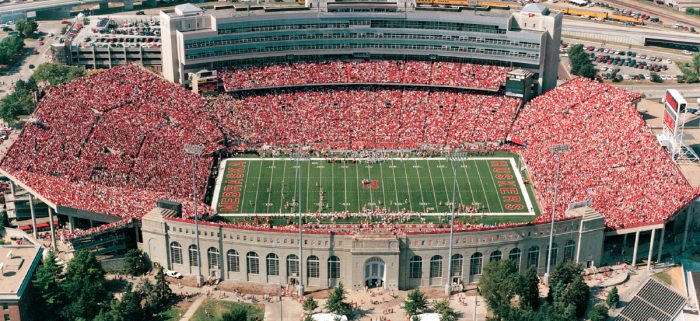
Q: Mark, you now oversee a team of seven. What lessons have you taken from that collegiate football experience and adapted to your present workday?
MG: It’s endless, to think about the things I took away from Nebraska. And this may sound cliché and stereotypical, but I learned about the concept of teamwork, the concept of hard work and how at the end of the day, end of the year, when you can look back and say that you gave it everything you had and worked hard, you can sit back and smile because you can see the benefits of that.
I also, again, have that sense of urgency. I actually have that printed out and hanging up on my wall, the phrase, “Sense of urgency.” I do, because my team has to have a sense of urgency, because if we do not do our jobs we could potentially have a company possibly terminate us as their vendor. That is a sense of urgency: we have to always, every day, we come to work for forty to fifty hours per week, we have to be on our game. I use that, and took that away from my experience.
And in high school football I didn’t have success. We were a .500 high school football team, and one of the things I remember is the, ‘Boy, I hope we play good tonight. I hope we don’t get our butt kicked,’ to Nebraska where, “We are going to play good tonight and we are going to win tonight.” I think I brought that experience from Nebraska and I try to apply it every day: ‘I’m gonna prepare myself so I know when it is on the line and my team’s on the line, we are going to perform and we are going to win.’ It’s really helped me in business.
Business is a lot like athletics and a lot like competition. I just take that overall attitude and apply it to my daily business life. And seriously, I always fear sounding cliché and saying the trite thing, but I tell you, this is the truth. It’s the God- honest truth. I see direct correlations from what I learned at Nebraska to my daily life.
Q: You’re a better man for it?
MG: Most definitely.
End conversation.
One-time Nebraska Receivers Coach Ron Brown, unfortunately, was unavailable for this project, so it’s our good fortune to hear of his spirit, his daily exhortations to former pupils: “…he was intense. And it was constant, continuous improvement and challenging us at every moment to be better and to feel the pressure and intensity that it takes to be a champion at all times.” Whether it was on the recruiting trail or practice field, he was the kind of fellow who made you want to sit up and pay attention, rarely wasting words. A living, walking, breathing motivational seminar, ninety-nine times out of a hundred kids gravitated to his axioms and attitude-adjusting insights. And if you can remember, in many cases Husker receivers were no more than fleet-footed obstructionists: blocking, pushing, cutting down defenders in the wake of another glorious touchdown romp by the backs. Like the rare comet passing in a galaxy of swirling terrestrial bodies, every now and again they were afforded an opportunity to perform what the position implied, which was to receive the airborne, oblong spheroid known as a football. In those 5 seasons from 1993 to 1997 the offense averaged 58 rushes per game for a 6 yard per carry average, whereas, (much to my astonishment) they passed a surprising 18 times per game, achieving 10 completions for a 14 yard average and 54% completion rate. Tom Osborne’s employing a roughly 3 to 1 run/pass ratio, the old ‘three yards and cloud of dust’ phrase now rings sort of hollow and defies stereotype. Harkening back, the projector in my mind splashes highlight clips of receivers Abdul Muhammed, Clester Johnson, Eric Alford, Gerald Armstrong, Trumane Bell, Reggie Baul, Corey Dixon, Lance Brown, Kenny Cheatham, Shevin Wiggins (and his foot), Matt Davison, Jon Vedral, and Brenden Holbein, et al., but none more so than Mark Gilman. Mark was right: that first touchdown in the national championship game was one big catch. And it was helped along with a little sense of urgency.
One tidbit that really jumped out after reading our transcribed conversation was Mark’s: “You learned more. I think Osborne’s real famous for emphasizing more than just football: it was academics, your spiritual life, doing things the right way, emphasizing life after football. He emphasized how to act on the field, off the field. He wasn’t just all about the x’s and o’s and about football and, “Hey, we’ve got to beat Colorado this week.”“ The tendency for the head honcho to relate to and make it a goal to nurture well-rounded human beings played a large part in developing organizational cohesion. Whereas one could now and then find a coach or a whole program in college football who seemed oblivious to the fact that the game was merely an adjunct to a full, foundational, educational university experience, Tom Osborne was not one to compartmentalize the ball-playing at the expense of other facets of existence as student-athletes. Doing so created a comfort zone: an open, honest and ongoing dialogue within coach/staff/player relationships, keeping many of them from ever feeling they were all alone or left behind in things non-football. It was a family with an educator as its head. And as you can see, after many years those lessons learned are still being applied in Mark Gilman’s daily work.
Notable quote #2:
Mark Gilman on the importance of ‘The Catch’: “I scored three career touchdowns, but the one in the Orange Bowl counts for twenty.”
Copyright @ 2013 Thermopylae Press. All Rights Reserved.
Photo Credits : Unknown Original Sources/Updates Welcomed
Author assumes no responsibility for interviewee errors or misstatements of fact.